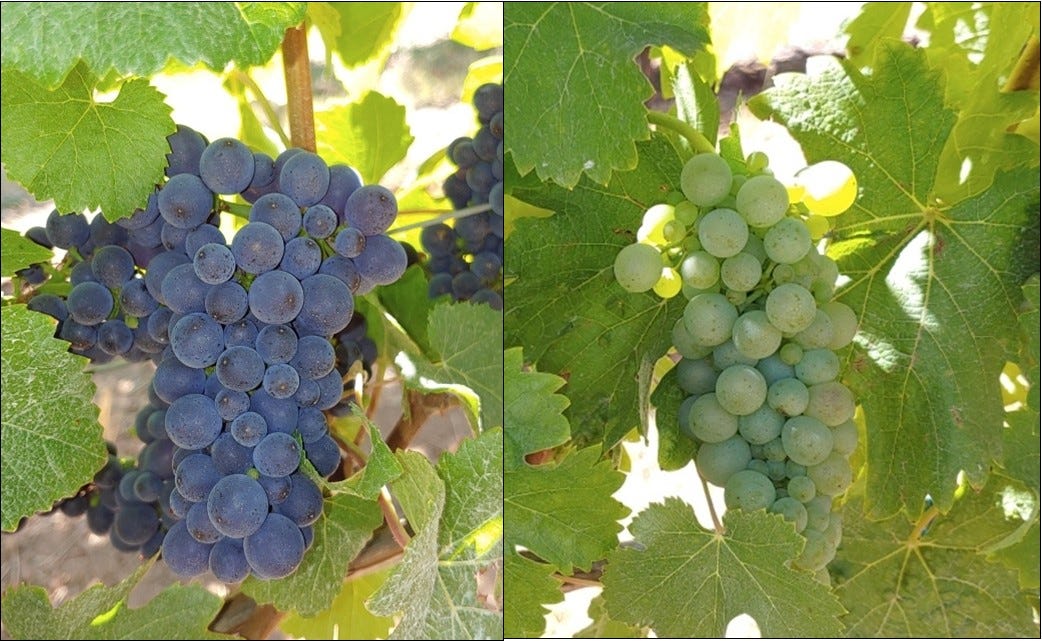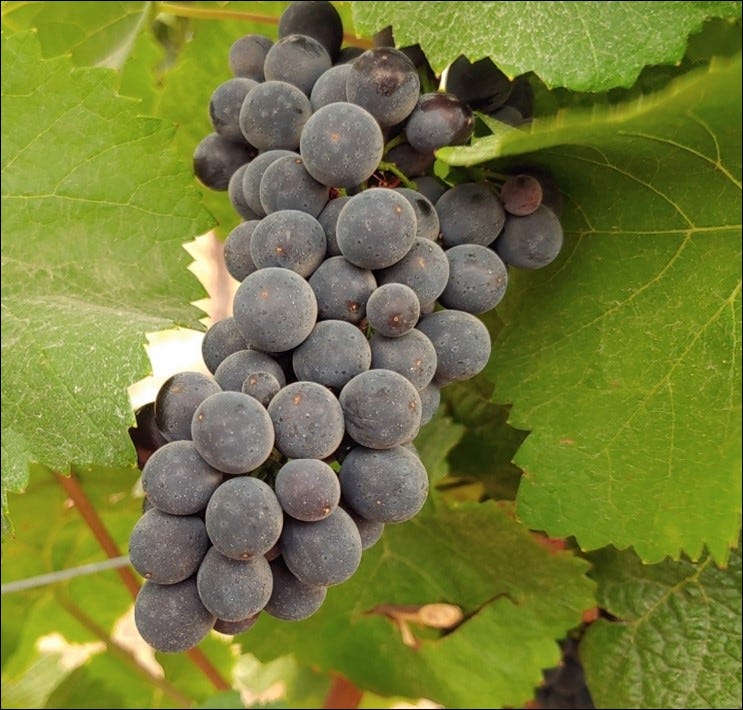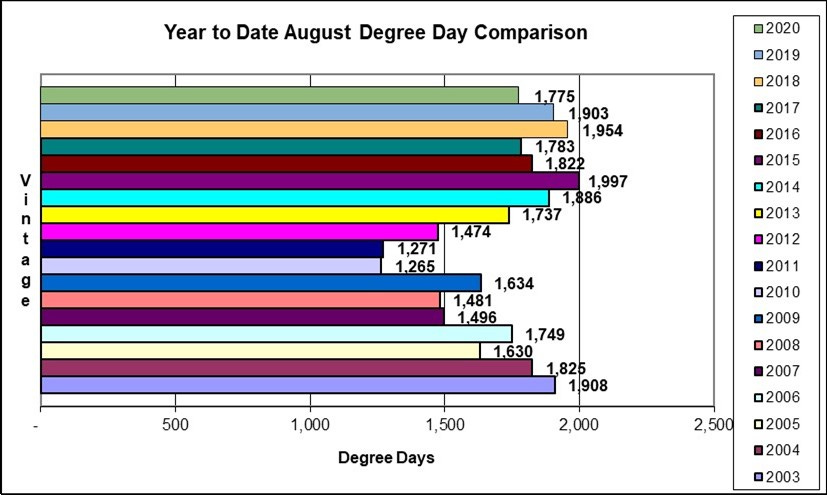Climate Update: August 2020
Hello and Welcome,
This is an Amalie Robert Estate Climate Update: August 2020. A FLOG communication from Dena and Ernie @AmalieRobert. Amalie Robert Willamette Valley Pinot Noir.
The Great Cluster Pluck, vintage 2020 is coming into view. Good things might come to those who wait, but not for those who wait too late. In other words, are we there yet?

The month of August was fairly temperate. Nothing really out of the ordinary from the last 30 year moving average – and that was quite nice. No rain, but that is just fine for our silty clay loam soils, known as Bellpine Series. These are marine sediment-based soils and they are quite miserly with their available soil moisture. In other words, they don’t give it up easily.
Ernie knew this when we designed the vineyard, and instead of following conventional wisdom of shallow rooted 101-14 and 3309 rootstocks (ho-hum), he went “all in” with a significant portion of the vineyard grafted onto 5C rootstock. Those roots dive deep, quite similar to own rooted vines, to extract all available soil moisture. This allows our wine berries to hang through the dry spells in August and September without shriveling and desiccation. Instead, the skins develop lovely red fruited aromas and flavors, while keeping our sugar concentrations in check, resulting in lower alcohol wines.
It’s a bug’s life. And get this, in our vineyard soil moisture budget we can afford to have grass in our rows. That grass provides the ecosystem necessary to foster good predatory bugs to keep our vines safe from the bad bugs that would do them harm, draining their vascular tissue. Bellpine soil and 5C rootstock. You are going to be hearing more and more about this combination, vis-à-vis Wadenswil.

The state of the vineyard is good! The clusters are just hanging there, ready to be plucked. Right now we are snipping and thinning off the wine berries that we do not want in the winery. These include the late to ripen wings, excessively green clusters and anything else that seems less than ideal. Then, in addition to the bioacoustics aerial Bird Gard attack, we deploy nets to the vine rows that are close to the forested areas of the vineyard. While originally developed for the fisheries of the world, nets are also very effective on birds. And if a stray coelacanth makes its way into the vineyard, well we are covered for that too.
The new normal - Hedging for effect. It is not necessarily the size of your canopy that counts, it is the magic growing in it. This is a pretty simple principle. The more leaves per lineal foot of canopy increases the sugar concentration in the wine berries, resulting in higher alcohol wines, all things being equal – which they never are. Right. So what to do?
There are two places where we can and do remove leaves. The first is the top of the canopy and the second is the fruit zone. Our physical layout for the vines is 7.5’ wide for the tractor driver (he uses it all for sure, for sure) and 4’ spacing from each vine. So agronomically speaking a 7.5’ spacing means you optimize sunlight harvesting with a 7.5’ tall canopy. The logic is irrefutable.
But if you are trying to shift the ripening curve to lower alcohol and more time on the vine to develop aroma and flavor, maybe that top foot of leaves is not contributing to your goal. Our Muse the Viognier taught Ernie this lesson a few vintages back. And this year he set the hedger low and applied this new learning to the Pinot Noir.

The second place to remove leaves is the fruit zone. This does not work for our Pinot Noir program as it creates excessive sun exposure on our wine berries resulting in high levels of bitter skin tannin. As we ferment with whole clusters, we look to the wine berries to offer more supple skin tannins, and the stems to provide the astringency that softens with bottle maturation. By leaving leaves, we intertwine and balance those two sources of tannins.

The answer was there the whole time. But the Syrah and Chardonnay both benefit from increased exposure in the fruit zone. In fact, the combination of a shorter canopy and more leaf removal from the fruit zone keeps our Cool Climate Syrah alcohols in check, as seen in the latest 2016 Satisfaction Syrah boasting a very respectable 12.7%. Yeah, this hedging thing is magic!
Here they are – The Numbers. The month of August contributed 537.7 Degree Days to vintage 2020, bringing the growing season total to 1,775.2. The high temperature for the month was just under the century mark at 99.5 degrees recorded on August 15th at 4:24 pm. The low temperature for the month was 45.9 degrees recorded on August 7th at 4:00 am. There was no measurable precipitation.

Stay tuned, things are about to get very interesting.
Kindest Regards,
Dena & Ernie



